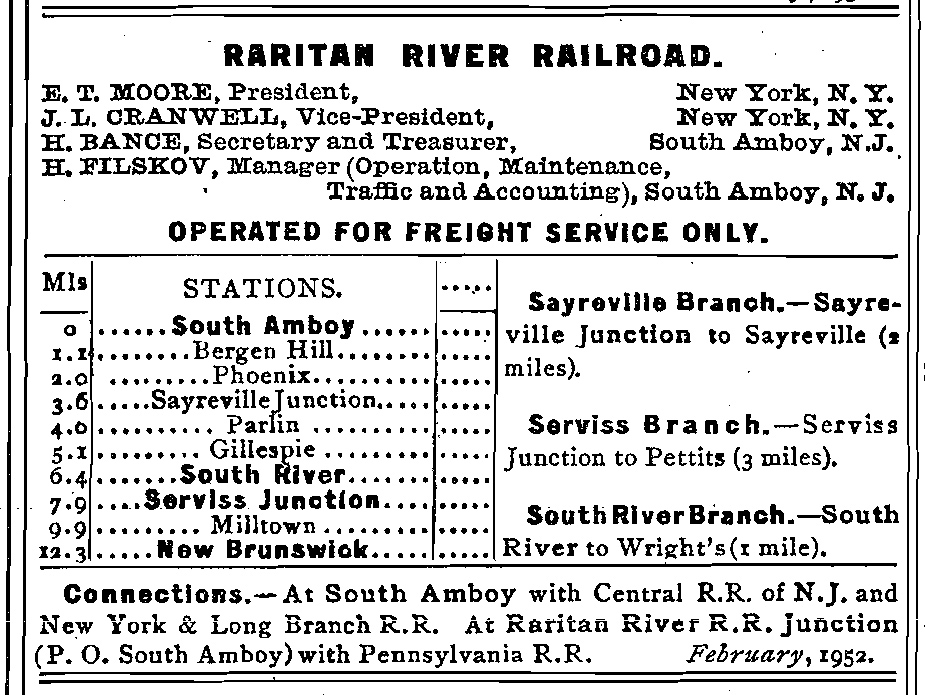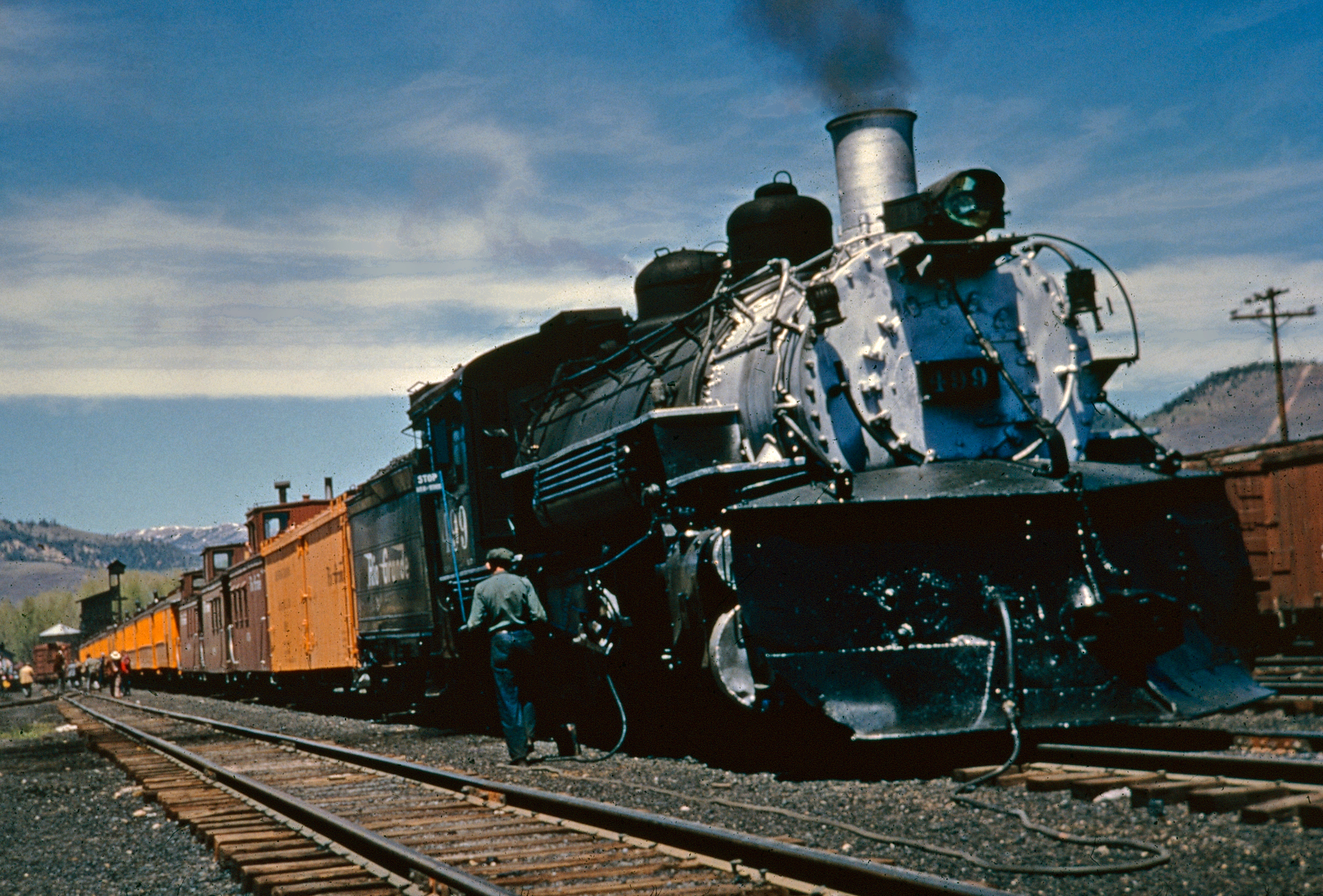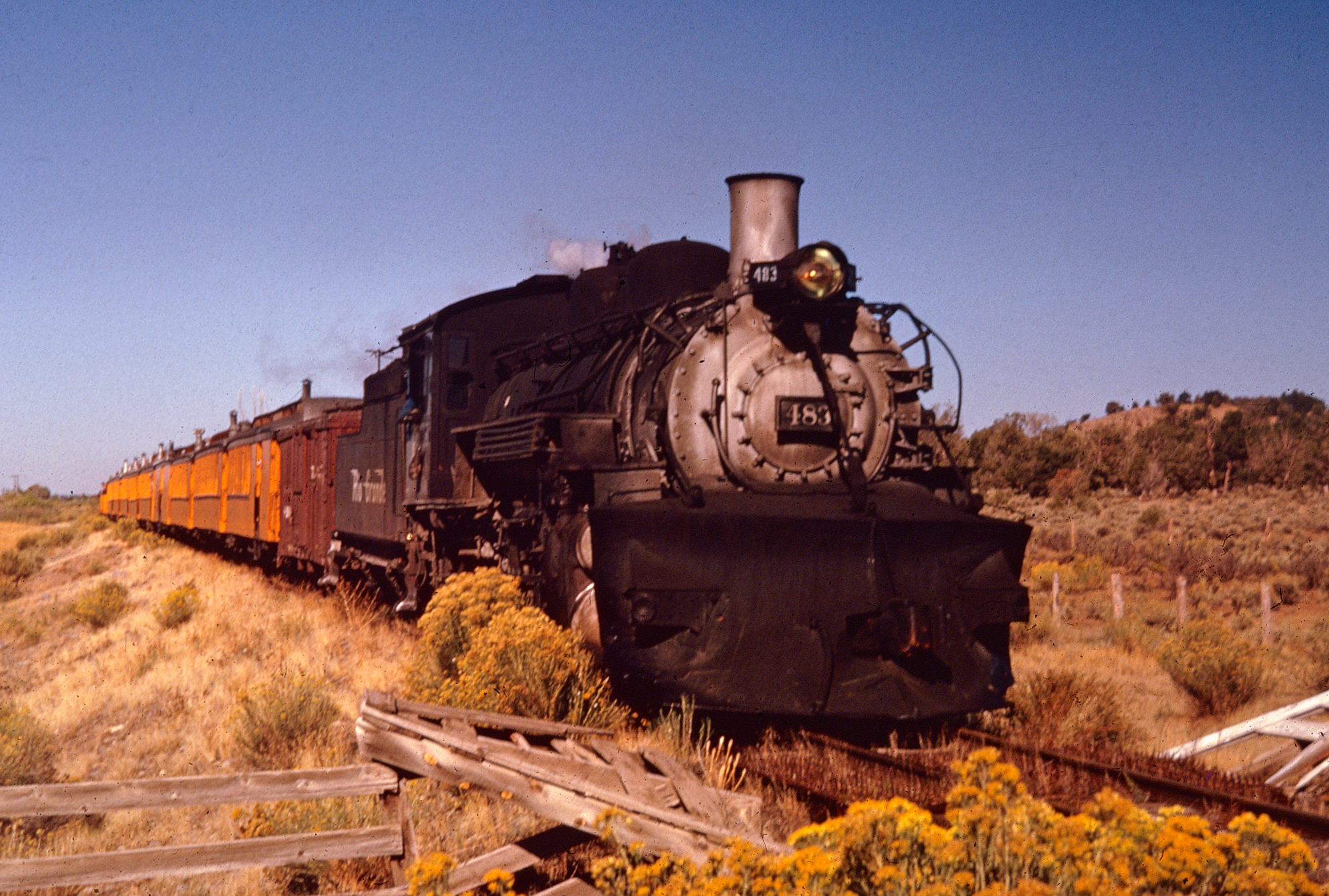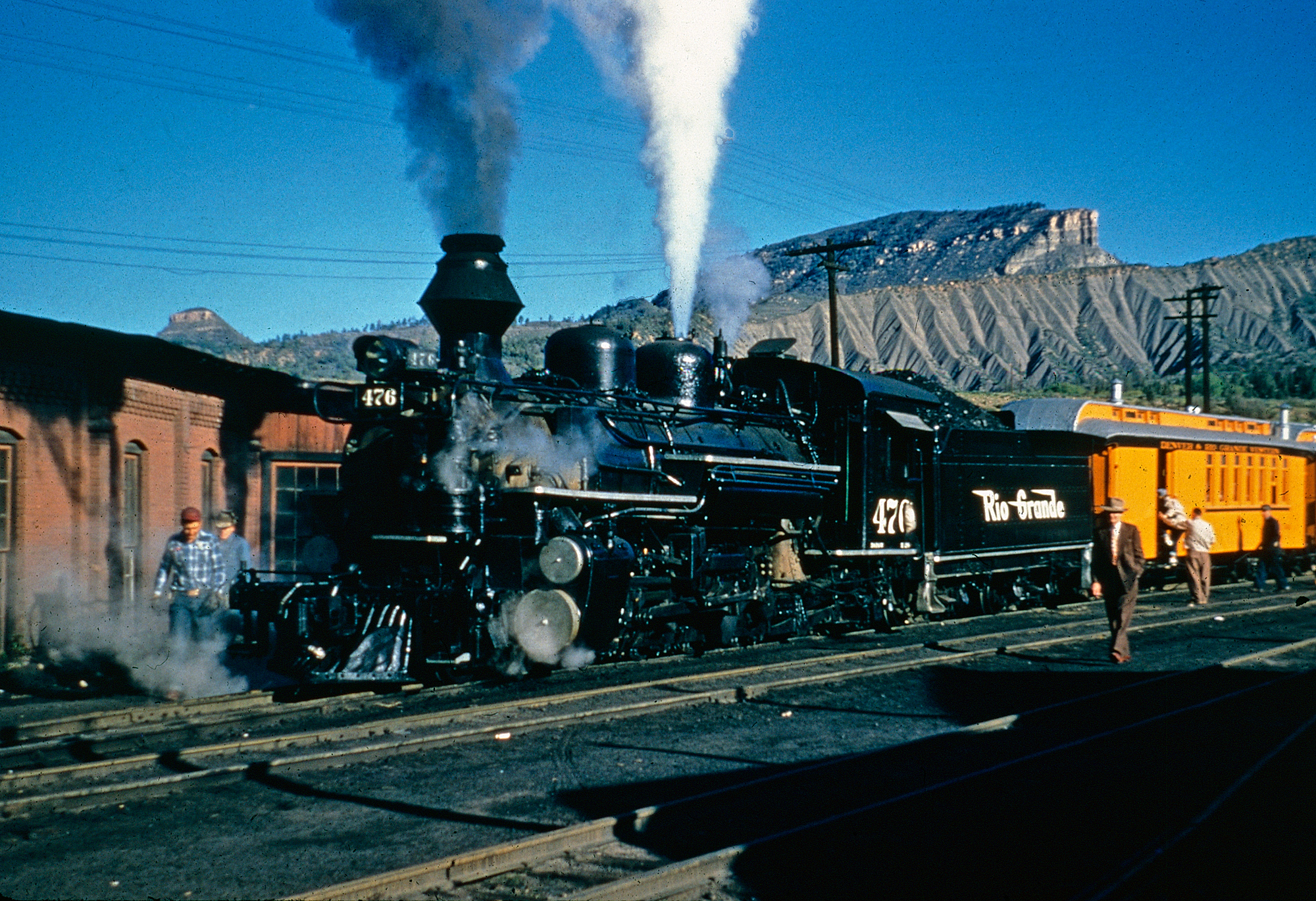Raritan River Railroad: Roster, History, Route
Last revised: February 24, 2025
By: Adam Burns
The Raritan River Railroad, a small yet significant regional railroad in New Jersey, holds a unique place in the annals of American transportation history.
Established during an era of proliferating rail networks, the Raritan River provided essential services to its industrial and residential communities, weaving itself into the socio-economic fabric of central New Jersey.
With a heritage dating back to 1888 the little short line proved quite successful, even into the tumultuous 1970s when many northeastern railroads were entering bankruptcy.
Despite its resistance to remain an independent operation the Raritan River was folded into Conrail on April 24, 1980. This article delves into the history, challenges, and legacy of the Raritan River Railroad.
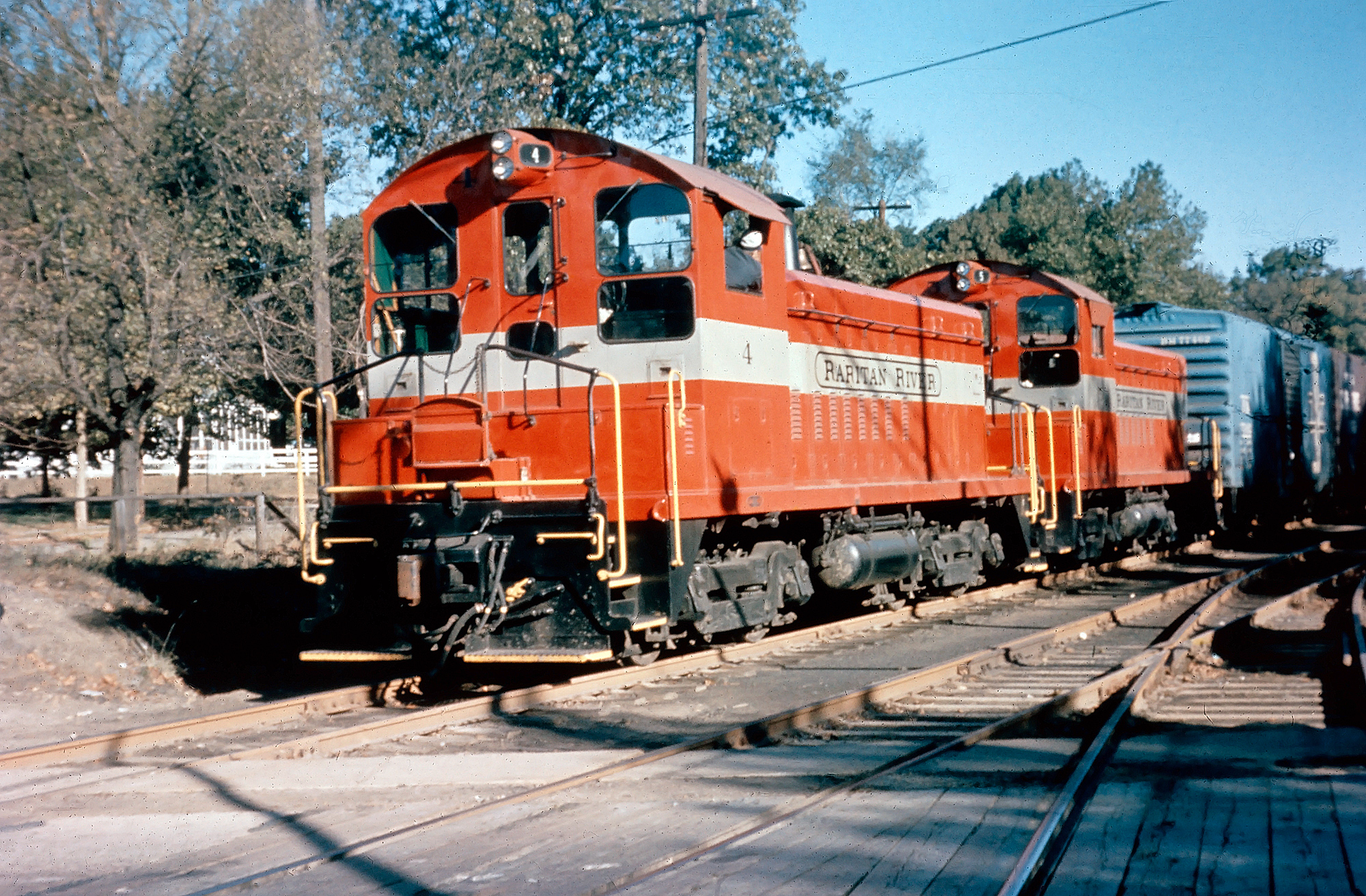 Raritan River Railroad SW900's #4 and #5 are busy at work in Parlin, New Jersey, circa 1958. These were acquired new in October of 1954. Meyer Pearlman photo. American-Rails.com collection.
Raritan River Railroad SW900's #4 and #5 are busy at work in Parlin, New Jersey, circa 1958. These were acquired new in October of 1954. Meyer Pearlman photo. American-Rails.com collection.Origins and Formation
The inception of the Raritan River Railroad can be traced back to the burgeoning industrialization of the late 19th century. With factories, warehouses, and refineries dotting the landscape of central New Jersey, there was a burgeoning need for efficient transportation solutions.
The RRR was incorporated on April 21, 1888 in New Brunswick, by a group of investors intent on addressing this need by providing a rail link between South Amboy and New Brunswick.
With an initial paid-in capital of $40,000, approximately $2,000 per mile, and a capital stock valuation of $100,000, the foundation for a significant transportation project was laid.
At the inaugural board meeting in April of the same year, Edward H. Ripley assumed the role of president, and E. W. Harrison was appointed as Chief Engineer. The board also awarded a construction contract to bring this vision to fruition.
Construction kicked off energetically in Sayreville in May, 1888, utilizing 60 lb rails. Remarkably, by year’s end, several trains were already operational.
Initially, the line began in Sayreville, connecting with the Pennsylvania Railroad via PRR's Suchs' siding. Suchs, a notable sand and clay industry, boasted an extensive siding from the PRR’s older C&A line in Sayreville.
The completion of the line eastward to South Amboy established a crucial connection with the Central Railroad of New Jersey (CNJ) over the New York & Long Branch line, effectively linking the Raritan River Railroad to two major rail networks.
By 1891, the railroad extended westward from Milltown to New Brunswick, and in 1901, a new PRR connection in South Amboy replaced the original Suchs' siding connection, marking significant advancements in regional connectivity and infrastructure.
The early vision for the RRR was fairly straightforward: to serve as a short-line railroad primarily focused on handling freight.
This foresight proved to be prescient, as the RRR's industrial clientele soon began to rely heavily on its services. By transporting raw materials into industrial zones and shipping finished goods to markets, the RRR significantly contributed to the region's economic development.
Construction and Branch Lines
Between 1888 and 1898, the Raritan River Railroad steadily built its foundation, operating with three engines, 34 freight cars, six passenger cars, 12 miles of mainline, and two branch lines.
Its connections with larger railroads like the Pennsylvania Railroad and the Central Railroad of New Jersey allowed it to seamlessly integrate into the broader national rail system, enhancing its utility and reach.
As the construction of the mainline steadily advanced westward towards New Brunswick, the Raritan River Railroad embarked on developing its first two branch lines.
In 1890, the 2.1-mile Sayreville Branch was completed, providing vital access to the Sayre and Fisher Brick Yards located near the mouth of the Raritan River. The following year, in 1891, construction began on the one-mile Serviss Branch in East Brunswick, designed to facilitate the transportation of sand and clay essential for the Sayre and Fisher operations.
During this period of growth, the railroad also expanded its fleet with the acquisition of its third locomotive (No. 3) and the addition of fourteen 30-ton freight cars, both procurements occurring in 1890.
By July 4, 1891, the Raritan River Railroad celebrated a significant milestone as its first train departed from Milltown. Shortly thereafter, the line successfully extended to New Brunswick, marking the completion of twelve miles (19 km) of mainline track.
Despite these achievements, the railroad opted against extending across the Raritan River into New Brunswick to reach Bound Brook. The decision was driven by the prohibitive costs and the limited potential for freight business in the predominantly undeveloped region at that time.
Between 1888 and 1898, the Raritan River Railroad had established a robust operation, boasting three engines, 34 freight cars, six passenger cars, and a total of twelve miles (19 km) of mainline complemented by two branch lines.
The RRR distinguished itself through its specialization. Serving numerous industries, including clay mines, brick manufacturers, and chemical plants, the railroad earned a reputation for reliability and efficiency.
The turn of the century marked a significant expansion for the railroad, particularly with the extension of the Serviss Branch. Initially a one-mile (1.6 km) line, it was extended to four miles, running from the RRRR mainline in East Brunswick, curving north and then back south towards South River. This extension aimed to service the growing number of sand and clay pits in the area, even reaching a small brickyard at Reid Street.
Concurrent with these expansions was the completion of the Sanford Street terminus in New Brunswick, featuring intricate brick passenger and freight stations. To accommodate the surge in freight activity, the railroad augmented its fleet with new locomotives.
4-4-0's #4 and #5 joined the roster in 1899 and 1900, respectively, and a batch of larger 40-ton freight cars was ordered. Around 1901, the original 4-4-0 #3 engine was replaced with a more powerful counterpart, reflecting ongoing enhancements in the railroad's capabilities.
The growth continued in 1905 with the construction of the South River Branch, a two-mile line extending south from the South River station. In the same year, 4-4-0 #6 was added, doubling the railroad's locomotive roster to six since 1898.
By 1907, the railroad further modernized its fleet by replacing both 4-4-0's #1 and #2 with more powerful models, each retaining their original numbering—demonstrating a commitment to maintaining tradition while embracing progress.
In 1917 the railroad's last major expansion occurred when it constructed the Gillespie Branch, strategically laid through a secluded wooded area to reach the T Gillespie Powder Works. This period marked an intense era of activity, with Gillespie, DuPont, and Hercules all engaged in producing munitions for World War I.
The volume of traffic on the RRRR surged, particularly with DuPont at its zenith, transporting up to four 50-ton cars daily, laden with weapons and munitions.
However, this bustling activity came to an abrupt halt on October 4, 1918, when a series of devastating explosions obliterated the Gillespie site, bringing a tragic end to this chapter of wartime production.
Challenges and Resilience
The Raritan River's journey was not without challenges. The early 20th century brought about a series of economic fluctuations, technological advancements, and regulatory changes that impacted the entire railroad industry.
The Great Depression of the 1930s, in particular, posed significant difficulties for the RRR, as it did for many businesses nationwide. Freight volumes decreased, revenue shrank, and maintaining profitability became increasingly difficult.
Despite these adversities, the RRR demonstrated remarkable resilience. By adopting cost-saving measures, streamlining operations, and maintaining strong customer relationships, the railroad managed to navigate through these tumultuous times.
Additionally, the RRR's management continually sought innovative solutions to remain competitive. For example, the railroad embraced the transition from steam to diesel locomotives during the mid-20th century, enhancing efficiency and reliability.
Official Guide Listing (1952)
Locomotive Fleet
In addition to their early roster of 4-4-0s, the Raritan River also later fielded 2-8-0s, USRA 2-8-2s, 4-6-0s, and small switchers.
In 1954 the railroad acquired six new SW900 switchers from Electro-Motive, immediately ending remaining steam opreations. Crews took exceptional care of these little engines, which always appeared like-new while in service.
Steam Roster
- 4-4-0 #1 (1st): Purchased 1888, retired 1907.
- 2-8-0 #1 (2nd): Built 1907, scrapped 1929.
- 4-4-0 #2 (1st): Purchased 1888, scrapped 1909.
- 2-8-0 #2 (2nd): Built 1909, scrapped 1929.
- 4-6-0 #3 (1st): Purchased 1890, retired 1892.
- 4-6-0 #3 (2nd): Built 1892, scrapped 1915.
- 0-6-0 #3 (3rd): Purchased 1917, sold 1922.
- 4-6-0 #4 (1st): Built 1899, scrapped 1915.
- 0-6-0 #4 (2nd): Purchased 1917, sold 1922.
- 4-6-0 #5: Purchased 1900, scrapped 1909.
- 2-8-0 #6: Built 1905, sold 1923.
- 2-8-0 #7: Built 1912, scrapped 1933.
- 0-6-0 #8: Purchased 1938, scrapped 1948.
- 2-8-2 #9: Built 1915, retired 1948.
- 2-8-2 #10: Built 1915, retired 1948.
- 2-8-2 #11: Built 1916, retired 1947.
- 2-8-2 #12: Built 1916, retired 1937.
- 2-8-2 #14: Built 1916, retired 1948.
- 4-6-2 #15: Built 1916, retired 1948.
- 0-6-0 #16: Built 1944 (US Army #4043). Acquired in 1947 and scrapped in 1954.
- 0-6-0 #17: Built 1944 (US Army #4044). Acquired in 1947 and scrapped in 1954.
- 0-6-0 #18: Built 1944 (US Army #4053). Acquired in 1947 and scrapped in 1954.
- 0-6-0 #19: Built 1944 (US Army #4054). Acquired in 1947 and scrapped in 1954.
- 0-6-0 #20: Built 1944 (US Army #4055). Acquired in 1947 and scrapped in 1954.
- 0-6-0 #21: Built 1944 (US Army #4027). Acquired in 1948 and scrapped in 1954.
- 0-6-0 #22: Built 1944 (US Army #4031). Acquired in 1948 and scrapped in 1954.
Diesel Roster
| Road Number | Model Type | Date Built | Builder | Serial Number | Conrail Number |
|---|---|---|---|---|---|
| 1 | SW900 | 9/1954 | EMD | 19922 | 8658 |
| 2 | SW900 | 9/1954 | EMD | 19923 | 8659 |
| 3 | SW900 | 10/1954 | EMD | 19924 | 8660 |
| 4 | SW900 | 10/1954 | EMD | 19925 | 8661 |
| 5 | SW900 | 10/1954 | EMD | 19926 | 8662 |
| 6 | SW900 | 10/1954 | EMD | 19927 | 8663 |
Passenger Services
While freight transportation constituted the bulk of the RRR's operations, the railroad also played a role in passenger services. In the early years, the RRR operated passenger trains to accommodate the travel needs of local residents. However, with the rise of automobile ownership and improved road infrastructure in the mid-20th century, passenger demand gradually diminished.
On April 17, 1938, the RRR had ceased regular passenger services, focusing instead on its core competency of freight transportation. The discontinuation of passenger services was reflective of a broader industry trend, as railroads across the United States faced stiff competition from emerging modes of transportation.
Decline and Transition
The latter half of the 20th century presented a mixed bag of fortunes for the Raritan River Railroad. On one hand, the railroad continued to serve its loyal industrial clientele, facilitating the movement of goods and materials vital to the regional economy.
However, the broader railroad industry was grappling with significant changes, including deregulation, increased competition, and evolving market dynamics.
In 1956, after a decade of inactivity, the Serviss Branch was officially abandoned and scrapped, along with the Fresh Ponds spur in Milltown. This period marked a challenging time for the Raritan River as the industrial base of the East Coast began to shift, affecting the RRRR and other eastern railroads.
By 1964, the railroad had to eliminate all Less-Car-Load (LCL) freight services, resulting in the closure of freight station agencies. The coal traffic, once a significant revenue source, was also largely gone.
The Penn Central Transportation Company, formed through the merger of the Pennsylvania Railroad and New York Central Railroad in 1968, had a profound impact on the RRR's operations.
Penn Central itself faced financial struggles, and its eventual bankruptcy in 1970 sent shockwaves through the industry. For the RRR, these changes underscored the need for adaptability and strategic alignment.
Acquisition and Legacy
Despite the financial turmoil of its parent companies, Central Railroad of New Jersey (CNJ) and Penn Central, both of which filed for bankruptcy, the RRRR remained solvent.
A significant boost came from a new industrial complex named Highview, built in East Brunswick. This development involved re-laying part of the old Serviss Branch, now renamed the East Brunswick Branch, to serve Continental Bakery, which utilized the rail to receive flour shipments.
Sunshine Biscuit also contributed to the line's resurgence by opening a plant on the Gillespie Branch. Additionally, the South River Branch and trackage in New Brunswick were upgraded to serve new customers.
The RRRR also generated revenue from high per diem rates by leasing 100 fifty-foot boxcars in 1975. The railroad reached its peak financial performance in 1979, with operating revenues totaling $1,968,671.
Emphasizing customer service and maintaining long-term relationships with customers such as Dupont and Hercules, the RRRR managed to sustain rail services even for small and infrequent shippers.
In 1980, the Raritan River Railroad's independent operations came to an end when it was acquired by Conrail on April 24th that year, the government-sponsored corporation created to salvage the nation's failing railroads.
This acquisition marked a new chapter for the RRR, as it was integrated into Conrail's extensive network. Under Conrail's ownership, the railroad's 12-mile line was renamed as the Sayreville Running Track. The new system also closed the railroad's historic shops in South Amboy in 1980.
After Conrail's eventual split in 1999, the lines that once belonged to the Raritan River Railroad became part of various successor entities, including Conrail Shared Assets, Norfolk Southern, and CSX Transportation. The legacy of the RRR endures through these entities, reflecting its historical contributions to regional transportation.
Conclusion
The Raritan River Railroad's history is a testament to the enduring spirit of innovation, adaptability, and resilience. From its humble beginnings in the late 19th century to its integration into larger railroad networks in the 20th century, the RRR played a pivotal role in shaping the economic landscape of central New Jersey.
Despite numerous challenges, the railroad remained a reliable partner for industries and communities, exemplifying the critical role of short-line railroads in the broader transportation ecosystem.
As we reflect on the Raritan River Railroad's storied past, it becomes evident that its legacy extends beyond its physical tracks. The RRR's history embodies the transformative power of transportation, the ingenuity of its operators, and the lasting impact of railroads on regional development.
Today, the echoes of the Raritan River Railroad continue to resonate, reminding us of the intricate interplay between railroads and the communities they serve.
Recent Articles
-
Rio Grande 2-8-2 Locomotives (K-37): Specs, Roster, Photos
Apr 15, 25 12:57 PM
Rio Grande's Class K-37 Mikes were itsdge steamers to enter service in the late 1920s. Today, all but two survive. -
Rio Grande 2-8-2 Locomotives (K-36): Specs, Roster, Photos
Apr 15, 25 11:09 AM
The Rio Grande's K-36 2-8-2s were its last new Mikados purchased for narrow-gauge use. Today, all but one survives. -
Rio Grande 2-8-2 Locomotives (Class K-28): Specs, Roster, Photos
Apr 14, 25 10:24 PM
Rio Grande's Class K-28 Mikados were its newest narrow-gauge steam locomotives since the Mudhens of the early 1900s. Today, three survive.
